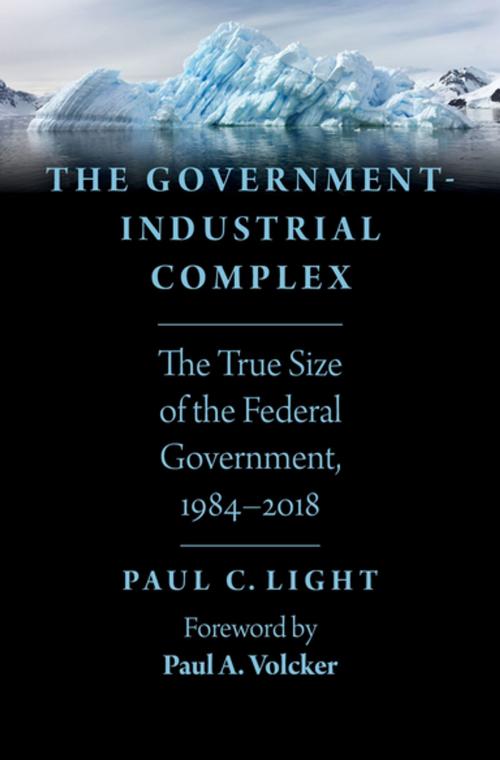The Government-Industrial Complex
The True Size of the Federal Government, 1984-2018
Nonfiction, Social & Cultural Studies, Political Science, Government, Public Affairs & Administration, Local Government, Public Policy| Author: | Paul C. Light | ISBN: | 9780190851811 |
| Publisher: | Oxford University Press | Publication: | November 19, 2018 |
| Imprint: | Oxford University Press | Language: | English |
| Author: | Paul C. Light |
| ISBN: | 9780190851811 |
| Publisher: | Oxford University Press |
| Publication: | November 19, 2018 |
| Imprint: | Oxford University Press |
| Language: | English |
In his 1961 Farewell Address, President Eisenhower famously referred to the emergence of a "military-industrial complex" so powerful that it threatened to warp America's political institutions and economy. However, the military was not the only part of a blended government workforce that was growing by leaps and bounds. Over the next half century, the true size of the federal government expanded in almost every department and agency as it came to depend on 7-9 million federal, contract, and grant employees to faithfully execute the laws. In The Government-Industrial Complex, public management expert Paul Light not only traces the expansion of the federal government's workforce over the past few decades, but also explains why it has taken the shape that it has. In marked contrast to governments in other wealthy countries, America's relies heavily on contract and grant employees to deliver goods and services even as the number of federal employees has held steady for seventy years. Light traces the rise of this government-industrial complex and asks whether and how the nation can be sure that the right people are in the right jobs to assure maximum performance for the public good. To do this, he offers short histories of the roles of various presidents and the impacts of war and economic crisis on the changing size of government. He also highlights the Trump administration's early strategies on downsizing and deconstructing government. Light emphasizes that achieving the right balance between public and private responsibilities is the key to making government both more efficient and more responsive. Comprehensive and pointed, this is a landmark account of the true nature and scope of national governance in the United States.
In his 1961 Farewell Address, President Eisenhower famously referred to the emergence of a "military-industrial complex" so powerful that it threatened to warp America's political institutions and economy. However, the military was not the only part of a blended government workforce that was growing by leaps and bounds. Over the next half century, the true size of the federal government expanded in almost every department and agency as it came to depend on 7-9 million federal, contract, and grant employees to faithfully execute the laws. In The Government-Industrial Complex, public management expert Paul Light not only traces the expansion of the federal government's workforce over the past few decades, but also explains why it has taken the shape that it has. In marked contrast to governments in other wealthy countries, America's relies heavily on contract and grant employees to deliver goods and services even as the number of federal employees has held steady for seventy years. Light traces the rise of this government-industrial complex and asks whether and how the nation can be sure that the right people are in the right jobs to assure maximum performance for the public good. To do this, he offers short histories of the roles of various presidents and the impacts of war and economic crisis on the changing size of government. He also highlights the Trump administration's early strategies on downsizing and deconstructing government. Light emphasizes that achieving the right balance between public and private responsibilities is the key to making government both more efficient and more responsive. Comprehensive and pointed, this is a landmark account of the true nature and scope of national governance in the United States.















